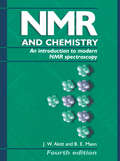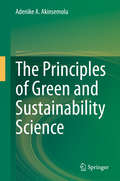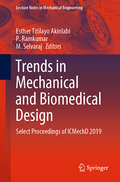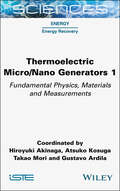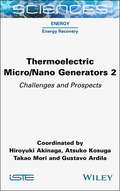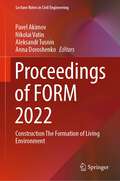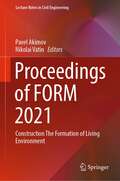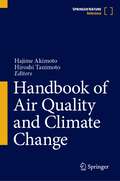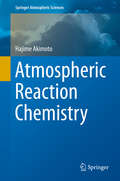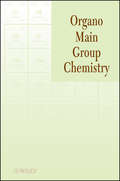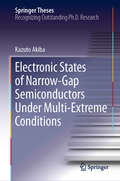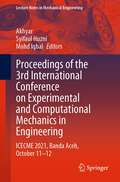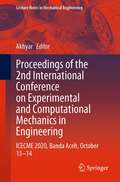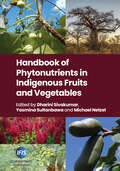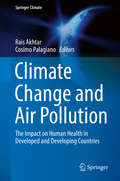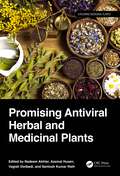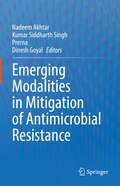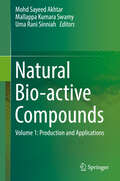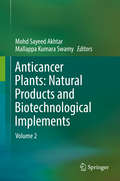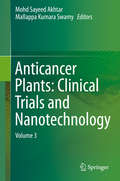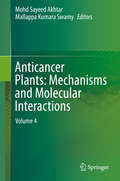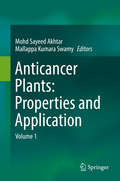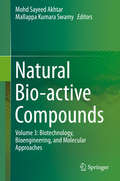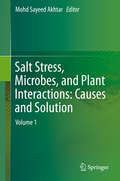- Table View
- List View
NMR and Chemistry: An introduction to modern NMR spectroscopy, Fourth Edition
by J. W. Akitt B. E. MannKeeping mathematics to a minimum, this book introduces nuclear properties, nuclear screening, chemical shift, spin-spin coupling, and relaxation. It is one of the few books that provides the student with the physical background to NMR spectroscopy from the point of view of the whole of the periodic table rather than concentrating on the narrow applications of 1H and 13C NMR spectroscopy. Aids to structure determination, such as decoupling, the nuclear Overhauser effect, INEPT, DEPT, and special editing, and two dimensional NMR spectroscopy are discussed in detail with examples, including the complete assignment of the 1H and 13C NMR spectra of D-amygdain.The authors examine the requirements of a modern spectrometer and the effects of pulses and discuss the effects of dynamic processes as a function of temperature or pressure on NMR spectra. The book concludes with chapters on some of the applications of NMR spectroscopy to medical and non-medical imaging techniques and solid state chemistry of both I = F1/2 and I > F1/2 nuclei. Examples and problems, mainly from the recent inorganic/organometallic chemistry literature support the text throughout. Brief answers to all the problems are provided in the text with full answers at the end of the book.
The Principles of Green and Sustainability Science
by Adenike A. AkinsemoluThis book uses the concept of sustainability in science to address problems afflicting the environment, and to devise measures for improving economies, societies, behaviors, and people. The book pursues a scientific approach, and uses scientific evidence as the basis for achieving sustainability. The key topics addressed include: unemployment, health and disease, unsustainable production, our common future, renewable energies, waste management, environmental ethics, and harmful anthropogenic activities. Whereas past literature has mainly examined sustainability as an environmental issue, this book expands the conversation into various sciences, including mathematics, biology, agriculture, computer science, engineering, and physics, and shows how sustainability could be achieved by uniting these fields. It offers a wealth of information across various disciplines, making it not only an intriguing read but also informative and insightful.
Trends in Mechanical and Biomedical Design: Select Proceedings of ICMechD 2019 (Lecture Notes in Mechanical Engineering)
by Esther Titilayo Akinlabi P. Ramkumar M. SelvarajThis book comprises select papers presented at the International Conference on Mechanical Engineering Design (ICMechD) 2019. The volume focuses on the recent trends in design research and their applications across the mechanical and biomedical domain. The book covers topics like tribology design, mechanism and machine design, wear and surface engineering, vibration and noise engineering, biomechanics and biomedical engineering, industrial thermodynamics, and thermal engineering. Case studies citing practical challenges and their solutions using appropriate techniques and modern engineering tools are also discussed. Given its contents, this book will prove useful to students, researchers as well as practitioners.
Thermoelectric Micro / Nano Generators, Volume 1: Fundamental Physics, Materials and Measurements
by Hiroyuki Akinaga Atsuko Kosuga Takao Mori Gustavo ArdilaThis book explores a key technology regarding the importance of connections via an Internet of Things network and how this helps us to easily communicate with others and gather information. Namely, what would happen if this suddenly became unavailable due to a shortage of power or electricity? Using thermoelectric generators is a viable solution as they use the heat around us to generate the much-needed electricity for our technological needs. This first volume explores the computational and data-driven development of these thermoelectric generators, as well as the use of various abundant materials such as copper and silver chalcogenides and nanocarbons. It also offers reviews on universal property enhancement principles and the case of strongly correlated oxides, and goes on to explore the metrology of the thermal properties of thermoelectric generators, detailing methods of how to measure the absolute Seebeck coefficient using the Thomson effect and the thermal diffusivity of thin films using the ultrafast laser flash method.
Thermoelectric Micro / Nano Generators, Volume 2: Challenges and Prospects
by Hiroyuki Akinaga Atsuko Kosuga Takao Mori Gustavo ArdilaThis book explores a key technology regarding the importance of connections via an Internet of Things network and how this helps us to easily communicate with others and gather information. Namely, what would happen if this suddenly became unavailable due to a shortage of power or electricity? Using thermoelectric generators is a viable solution as they use the heat around us to generate the much-needed electricity for our technological needs. This second volume on the challenges and prospects of thermoelectric generators covers the reliability and durability of thermoelectric materials and devices, the effect of microstructures on the understanding of electronic properties of complex materials, thermoelectric nanowires, the impact of chemical doping or magnetism, thermoelectric generation using the anomalous Nernst effect, phonon engineering, the current state and future prospects of thermoelectric technologies, transition metal silicides, and past, present and future applications of thermoelectrics.
Proceedings of FORM 2022: Construction The Formation of Living Environment (Lecture Notes in Civil Engineering #282)
by Pavel Akimov Nikolai Vatin Aleksandr Tusnin Anna DoroshenkoThis book gathers the latest advances, innovations, and applications in the field of environmental and construction engineering, as presented by international researchers at the XXV International Scientific Conference "Construction: The Formation of Living Environment", held in Moscow, Russia on April 20-22, 2022. It covers highly diverse topics, including sustainable innovative development of the construction industry, building materials, reliability of buildings and constructions and safety in construction, modelling and mechanics of building structures, engineering and smart systems in construction, climate change and urban environment. The contributions, which were selected by means of a rigorous international peer-review process, highlight numerous exciting ideas that will spur novel research directions and foster multidisciplinary collaborations.
Proceedings of FORM 2021: Construction The Formation of Living Environment (Lecture Notes in Civil Engineering #170)
by Pavel Akimov Nikolai VatinThis book gathers the latest advances, innovations, and applications in the field of environmental and construction engineering, as presented by international researchers at the XXIV International Scientific Conference "Construction: The Formation of Living Environment", held in Moscow, Russia on April 22-24, 2021. It covers highly diverse topics, including sustainable innovative development of the construction industry, building materials, reliability of buildings and constructions and safety in construction, modelling and mechanics of building structures, engineering and smart systems in construction, climate change and urban environment. The contributions, which were selected by means of a rigorous international peer-review process, highlight numerous exciting ideas that will spur novel research directions and foster multidisciplinary collaborations.
Handbook of Air Quality and Climate Change
by Hajime Akimoto Hiroshi TanimotoThis handbook covers the air quality/air pollution from the viewpoints of causing impacts on human/ecosystem health and climate change. Traditionally, air pollution has been a concern mainly in terms of its impacts on human health, and it is still an immediate public and governmental concern in most Asian countries. However, in recent years so-called extreme weather events, such as stronger tropical cyclones, flooding, drought, and other phenomena, have been manifested causing tremendous losses of human lives and properties. Importantly, climate models tell us that such extreme weather events are actually induced by anthropogenic global warming. It has been pointed out that mitigation or alleviation of such climate change leading to the extreme weather events in the next 30 years can be possible only by reducing air pollutants with positive radiative forcing such as ozone or methane, which are called short-lived climate pollutants (SLCPs). Here, concerns about mitigation of air pollutants from the points of human health and climate change have merged. This book covers different kinds of air pollutants and radiative forcers and how they can be measured. It also mentions the situation of air pollutants in different continents and their regional impacts to human health, environment and economy as well as their link to extreme weather events. The book presents how the air pollution and climate change can be mitigated and how clean air technologies and international initiatives for co-controlling air pollution and climate change have been developed.
Atmospheric Reaction Chemistry (Springer Atmospheric Sciences)
by Hajime AkimotoThis book is aimed at graduate students and research scientists interested in gaining a deeper understanding of atmospheric chemistry, fundamental photochemistry, and gas phase and heterogeneous reaction kinetics. It also provides all necessary spectroscopic and kinetic data, which should be useful as reference sources for research scientists in atmospheric chemistry. As an application of reaction chemistry, it provides chapters on tropospheric and stratospheric reaction chemistry, covering tropospheric ozone and photochemical oxidant formation, stratospheric ozone depletion and sulfur chemistry related to acid deposition and the stratospheric aerosol layer. This book is intended not only for students of chemistry but also particularly for non-chemistry students who are studying meteorology, radiation physics, engineering, and ecology/biology and who wish to find a useful source on reaction chemistry.
Organo Main Group Chemistry
by Kin-ya AkibaForging a new association; main group elements and organic chemistry Covering the essentials of all main group elements in organic chemistry, along with the synthesis and reactions of their organic compounds in just one volume, Organo Main Group Chemistry breaks important new ground. While main group chemistry has traditionally been classified as part of inorganic chemistry, this book establishes the organic chemistry of main group elements for the first time. The organic compounds of elements in the second period of the periodic table, which are centered around carbon, are the major components of animals and plants, while those in the third period and below also play key roles worthy of discussion when studying main group element chemistry. The major chapters describe synthesis and reactivity of organic compounds in the third period and below and are arranged according to the order of the periodic table. Starting with the role of lithium and magnesium cations, the chapters reach fluorine and iodine compounds. The first two chapters summarize the unique and common characteristics of main group elements in relation to carbon. The latter chapters deal with modern topics that address the unique characteristics of organo main group compounds. Suitable for professional researchers, chemistry professors, and advanced students, Organo Main Group Chemistry presents a novel new approach to the way we view both main groups and organic chemistry itself.
Electronic States of Narrow-Gap Semiconductors Under Multi-Extreme Conditions (Springer Theses)
by Kazuto AkibaThis book discusses the latest investigations into the electronic structure of narrow-gap semiconductors in extreme conditions, and describes in detail magnetic field and pressure measurements using two high-quality single crystals: black phosphorus (BP) and lead telluride (PbTe). The book presents two significant findings for BP and PbTe. The first is the successful demonstration of the pressure-induced transition from semiconductor to semimetal in the electronic structure of BP using magnetoresistance measurements. The second is the quantitative estimation of how well the Dirac fermion description works for electronic properties in PbTe. The overviews on BP and PbTe from the point of view of material properties help readers quickly understand the typical electronic character of narrow-gap semiconductor materials, which has recently attracted interest in topological features in condensed matter physics. Additionally the introductory review of the principles and methodology allows readers to understand the high magnetic field and pressure experiments.
Proceedings of the 3rd International Conference on Experimental and Computational Mechanics in Engineering: ICECME 2021, Banda Aceh, October 11-12 (Lecture Notes in Mechanical Engineering)
by Akhyar Syifaul Huzni Mohd IqbalThis book gathers a selection of peer-reviewed papers presented at the 3rd International Conference on Experimental and Computational Mechanics in Engineering (ICECME 2021), held as a virtual conference and organized by Universitas Syiah Kuala, Banda Aceh, Indonesia, on October 11–12, 2021.This book, prepared by international scientists and engineers, covers the latest advances in computational mechanics, metallurgy and material science, energy systems, manufacturing processing systems, industrial and system engineering, biomechanics, artificial intelligence, micro-/nano-engineering, micro-electro-mechanical system, machine learning, mechatronics, and engineering design. This book is intended for academics, including graduate students and researchers, as well as industrial practitioners working in the areas of experimental and computational mechanics.
Proceedings of the 2nd International Conference on Experimental and Computational Mechanics in Engineering: ICECME 2020, Banda Aceh, October 13–14 (Lecture Notes in Mechanical Engineering)
by AkhyarThis book gathers a selection of peer-reviewed papers presented at the 2nd International Conference on Experimental and Computational Mechanics in Engineering (ICECME 2020), held as a virtual conference and organized by Universitas Syiah Kuala, Banda Aceh, Indonesia, on 13–14 October 2020. The contributions, prepared by international scientists and engineers, cover the latest advances in computational mechanics, metallurgy and material science, energy systems, manufacturing processing systems, industrial and system engineering, biomechanics, artificial intelligence, micro/nano-engineering, micro-electro-mechanical system, machine learning, mechatronics, and engineering design. The book is intended for academics, including graduate students and researchers, as well as industrial practitioners working in the areas of experimental and computational mechanics.
Overcoming Learning Disabilities
by Tatiana V. Akhutina Natalia M. PylaevaBased on the ideas of Russian psychologists Lev Vygotsky and Alexander Luria, this book explores methods of preventing or overcoming learning disabilities. Tatiana V. Akhutina and Natalia M. Pylaeva follow Vygotsky and Luria's sociocultural theory and their principle of a systemic structure and dynamic organization of higher mental functions, and build on their theoretical foundation by focusing on the interactive scaffolding of the weak components of the child's functional systems, the transition from joint child-adult co-actions, and the emotional involvement of the child. The authors discuss effective methods of remediation of attention, executive functions (working memory and cognitive control), and spatial and visual-verbal functions. Overcoming Learning Disabilities translates complex problems into easily understandable concepts that will be appreciated by school psychologists, special and general education teachers, and parents of children with learning disabilities.
Handbook of Phytonutrients in Indigenous Fruits and Vegetables
by Mohammad Akhtaruzzaman Stephen Akinola Saleha Akter Mohammad Khairul Alam Adeyemi Oladapo Aremu Manjeshwar Shrinath Baliga Harish Kumar Bastimal Amina Benabdallah Rajeev Bhat Tania Chacón-Ordóñez N.N.G. Chiranthika Daniel Cozzolino Maral Seidi Damyeh Patricia Esquivel Héctor Estrada-Medina Olaniyi Amos Fawole Mohsina Ferdous Miriam Monserrat Ferrer Selina Fyfe Cyrielle Garcia Nadaraj Govender Prasanna P. Gunathilake Ummai Habiba Chafik Hdider H.A.C.O Hettiarachchi Lee-Hoon Ho Fozia Homa Riadh Ilahy Beguvalli Subash Inchara Sheikh Nazrul Islam G. Janarny Víctor M Jiménez Eugénie Kayitesi Helyes Lajos Vimbainashe E. Manhivi Florence M. Mashitoa Petunia Mashiane Bárbara Paes Mata Patricia Irene Montañez-Escalante Niranjana Moorthi Isabela Jacob Moro Mack Moyo Siphosanele Mafa Moyo Hosakatte Niranjana Murthy Adaucto Bellarmino Netto Gabi Netzel Dr Michael Netzel Olubukola Motunrayo Odeyemi Abiodun Olusola Omotayo Miriam Ferrer Ortega Karkala Sreedhara Pai Karkala Usha Pai Giriyapura Srikantachar Pavankumar Zoltán Pék Elisa Dos Pereira Adaucto B. Pereira-Netto Anh Dao Phan Charlotte Ralison Vonimatra Razafindrazaka María del Ruenes-Morales Michael Rychlik Luis Vitor Sacramento Mateus Kawata Salgaço André Gonzaga Santos Horst Joachim Schirra Dr Mohammed Wasim Siddiqui Faith Seke Ambreen Naz Shah Md. Tariqul Shajib Kátia Sivieri Heather E Smyth Sukirtha Srivarathan Thuan-Chew Tan Imen Tlili Annegowda Hardur Venkatappa Juliana Vinholes Márcia Vizzotto Olivia Wright Guggalada Govardhana YadavThe effects of inadequate diets on the population include malnutrition, non-communicable diseases and obesity. 'Hidden hunger', also known as micronutrient deficiencies, leads to various health-related disorders and diseases. Indigenous plants, in the form of indigenous fruits and leafy vegetables are gaining interest as a source of nutrients and bioactive phytochemicals, satisfying both food demand and health needs. Moreover, with the impact of climate change, and the importance of sustainability of food systems, it is essential that we investigate new, forgotten and alternative crops that can thrive in harsh conditions, require low fertilizer input, and are easily harvestable. This book contains chapters on 33 understudied indigenous fruits and vegetables from all around the world, including African nightshade, amaranth, baobab fruit, Indian gooseberry, red bush apple and snake melon. Each chapter provides: An overview of plant botany. An understanding of the phytonutrient constituents and health-promoting properties of bioactive compounds or metabolites. Information on the biological activity of the functional compounds that will improve productivity and increase utilization of indigenous fruits and vegetables to sustain food security. Impacts of postharvest storage, processing, and traditional food preparation methods. Potential for new product development. This is an essential resource for academic researchers and industry professionals in the fields of horticulture, agriculture, crop science, human health and nutrition.
Climate Change and Air Pollution: The Impact on Human Health in Developed and Developing Countries (Springer Climate)
by Rais Akhtar Cosimo PalagianoThis book discusses regional and international climate-change, air- pollution and human-health scenarios. The research, from both industrialized and developing countries, focuses on region-specific perspectives of climate change impacts on air pollution. After analyzing the variations of climate data over recent decades, the authors consider the different effects of climate change on air pollution and health. As stressed by the IPCC, "pollen, smoke and ozone levels are likely to increase in a warming world, affecting the health of residents of major cities. Rising temperatures will worsen air quality through a combination of more ozone in cities, bigger wild fires and worse pollen outbreaks," according to a major UN climate report. The report follows the World Health Organization in finding that air pollution is the world's greatest environmental health risk, killing 7 million people in 2014 (compared to 0. 4 million deaths due to malaria). Deteriorating air quality will most affect the elderly, children, people with chronic ill-health and expectant mothers. Another report suggests that more than 5. 5 million people die prematurely each year due to air pollution with over half of those deaths occurring in China and India. A study on the air pollution in the USA,suggests that more than half of US population lives in areas with potentially dangerous air pollution, and about six out of 10 of the top cities for air pollution in the USA are located in the state of California. In the face of future climate change, scientists have urged stronger emission controls to avoid worsening air pollution and the associated exacerbation of health problems, especially in more populated regions of the world. It is hoped that the implementation of the Paris Climate Agreement will help minimize air pollution. Additionally the authors consider the various measures that different countries and groups of countries, like the European Union, have adopted to mitigate the problems arising from climate change and to safeguard the health of population. The book examines the increasing incidence of diseases largely caused by climate change. The countries/regions covered in this study include the USA, Northern Europe (U. K). ,Southern Europe ( Italy), Canada, Australia, East Asia, Russia, Hong Kong, Taiwan, Thailand, Malaysia, Indonesia, India, South Africa, Mexico, Brazil, Caribbean countries, and Argentina.
Promising Antiviral Herbal and Medicinal Plants (Exploring Medicinal Plants)
by Nadeem Akhtar Azamal Husen Vagish Dwibedi Santosh Kumar RathWith the prevalence of viral diseases causing significant health challenges and the emergence of highly infectious and difficult-to-treat conditions, such as Ebola, HIV/AIDS, and Hepatitis B, there is a pressing need for effective antiviral treatments. Throughout history, viral infections have caused devastating pandemics, leading to widespread illness and mortality. Notable examples include the Black Death caused by Yersinia pestis and the Spanish flu pandemic of 1918. To address this ongoing threat, exploring the potential of herbal and medicinal plants as a source of antiviral compounds is crucial. Promising Antiviral Herbal and Medicinal Plants provides a comprehensive overview of the latest research in the field of antiviral properties of herbal and medicinal plants. Features: Compiles cutting-edge research on the antiviral properties of various plants, highlighting their potential therapeutic applications. Discusses various chemical components of the medicinal and herbal plants with the known bioactive constituents and their antiviral applications. Elaborates on medicinal and herbal plants' opportunities and future direction for drug synthesis against various viral diseases. A volume in the Exploring Medicinal Plants series, this book is an essential resource for researchers, healthcare professionals, and those interested in viral infections and their management.
Emerging Modalities in Mitigation of Antimicrobial Resistance
by Nadeem Akhtar Dinesh Goyal Kumar Siddharth Singh PrernaAntimicrobial resistance (AMR) is one of the deadliest threats to global public health. This book focuses on dynamics in the landscape of AMR while informing about the latest technologies and strategies to mitigate it. The menace of AMR in different niches, routes of penetration across various domains, socio-economic impact, and the need for a 'One Health' approach in mitigating AMR has been emphasized. Factors involved in AMR, underlying mechanisms, and pharmacometrics in developing antimicrobials are highlighted. Emphasis is given to emerging technologies that are sustainable, scalable, and applicable to the global community, such as big data analytics, bioactive agents, phage therapy, and nanotechnology. The book also explores current and alternative treatment strategies to combat AMR, emphasizing the use of nanoparticles to target pathogens and as a viable alternative to antibiotics.
Natural Bio-active Compounds: Volume 1: Production and Applications
by Mohd Sayeed Akhtar Mallappa Kumara Swamy Uma Rani SinniahBioactive compounds produced by natural sources, such as plants, microbes, endophytic fungi, etc., can potentially be applied in various fields, including agriculture, biotechnology and biomedicine. Several bioactive compounds have proved to be invaluable in mediating plant-microbe interactions, and promoting plant growth and development. Due to their numerous health-promoting properties, these compounds have been widely used as a source of medication since ancient times. However, there is an unprecedented need to meet the growing demand for natural bioactive compounds in the flavor and fragrance, food, and pharmaceutical industries. Moreover, discovering new lead molecules from natural sources is essential to overcoming the rising number of new diseases. In this regard, natural bioactive compounds hold tremendous potential for new drug discovery. Therefore, this field of research has become a vital area for researchers interested in understanding the chemistry, biosynthetic mechanisms, and pharmacological activities of these bioactive metabolites. This book describes the basics of bioactive plant compounds, their chemical properties, and their pharmacological biotechnological properties with regard to various human diseases and applications in the drug, cosmetics and herbal industries. It offers a valuable asset for all students, educators, researchers, and healthcare experts involved in agronomy, ecology, crop science, molecular biology, stress physiology, and natural products.
Anticancer Plants: Volume 2
by Mohd Sayeed Akhtar Mallappa Kumara SwamyThis volume provides summarized scientific evidence of the different classes of plant-derived phytocompounds, their sources, chemical structures, anticancer properties, mechanisms of action, methods of extraction, and their applications in cancer therapy. It also discusses endophyte-derived compounds as chemopreventives to treat various cancer types. In addition, it provides detailed information on the enhanced production of therapeutically valuable anticancer metabolites using biotechnological interventions such as plant cell and tissue culture approaches, including in vitro-, hairy root- and cell-suspension culture; and metabolic engineering of biosynthetic pathways. Anticancer Plants: Natural Products and Biotechnological Implements – Volume 2” explores the natural bioactive compounds isolated from plants as well as fungal endophytes, their chemistry, and preventive effects to reduce the risk of cancer. Moreover, it highlights the genomics/proteomics approaches and biotechnological implementations. Providing solutions to deal with the challenges involved in cancer therapy, the book benefits a wide range of readers including academics, students, and industrial experts working in the area of natural products, medicinal plant chemistry, pharmacology, and biotechnology.
Anticancer Plants: Volume 3
by Mohd Sayeed Akhtar Mallappa Kumara SwamyCancer is one of the leading causes of death in human beings. Though several synthetic medicines are used to treat cancer, they are largely inefficient and unsafe. In contrast, plants, which have been used for medicinal purposes since time immemorial, have proved to be useful in fighting cancer, with natural compounds from plants and their derivatives offering safe and effective treatment and management for several types of cancer.Plants such as Catharanthus roseus, Podophyllum peltatum, Taxus brevifolia, Camptotheca acuminate, Andrographis paniculata, Crateva nurvala, Croton tonkinensis, Oplopanax horridus etc., are important source of chemotherapeutic compounds. These plants have proven their value in the treatment of cancer and various other infectious diseases, and several common anticancer compounds such as taxol, podophyllotoxins, camptothecin, vinblastine, vincristine, homoharringtonine etc. have been isolated and purified from these medicinal plants.Unfortunately, many of these anticancer plants have become endangered due to ruthless and irresponsible harvesting practices. Hence, there is a need to conserve these species and to propagate them on a large scale using plant tissue culture. Alternatively, plant cell tissue and organ culture biotechnology could be adopted to produce these anticancer compounds without the need for cultivation. A better grasp and continuing exploration of these isolated molecules and products could provide a powerful alternative means of reducing cancer risk.“Anticancer Plants: Volume 3, Clinical Trials and Nanotechnology” provides a timely review of concepts and experimental data on the application of anticancer plants and their compounds in clinical trials, and on the use of nanotechnology in cancer therapy.
Anticancer Plants: Volume 4
by Mohd Sayeed Akhtar Mallappa Kumara SwamyThis book summarizes the application of plant derived anticancer compounds as chemopreventives to treat several cancer types, focusing on the molecular mechanisms of action of phytocompounds and providing an overview of the basic processes at the cellular and molecular level that are involved in the progression of the cancer and can be employed in targeted preventive therapies. In addition, it highlights the development of novel anticancer drugs from plant sources using bioinformatics approaches. The compiled chapter data aids readers understanding of issues related to bioavailability, toxic effects and mechanisms of action of phytocompounds, and helps them identify the leads and utilize them against various cancer types effectively. Furthermore, it promotes the use of bioinformatics tools in medicinal plants to expedite their use in plant breeding programs to develop molecular markers to distinguish disease subtypes and predicting mutation, which in turn improves cancer diagnosis and prognosis, and to develop new lead compounds computationally. The book provides scientific verifications of plant compounds mechanisms of action against various cancers and offers useful information for students, teachers, and healthcare professionals involved in drug discovery, and clinical and therapeutic research.
Anticancer plants: Volume 1
by Mohd Sayeed Akhtar Mallappa Kumara SwamyCancer is one of the leading death cause of human population increasingly seen in recent times. Plants have been used for medicinal purposes since immemorial times. Though, several synthetic medicines are useful in treating cancer, they are inefficient and unsafe. However, plants have proved to be useful in cancer cure. Moreover, natural compounds from plants and their derivatives are safe and effective in treatment and management of several cancer types.The anticancer plants such as Catharanthus roseus, Podophyllum peltatum, Taxus brevifolia, Camptotheca acuminate, Andrographis paniculata, Crateva nurvala, Croton tonkinensis, Oplopanax horridus etc., are important source of chemotherapeutic compounds. These plants have proven their significance in the treatment of cancer and various other infectious diseases. Nowadays, several well-known anticancer compounds such as taxol, podophyllotoxins, camptothecin, vinblastine, vincristine, homoharringtonine etc. have been isolated and purified from these medicinal plants. Many of them are used effectively to combat cancer and other related diseases. The herbal medicine and their products are the most suitable and safe to be used as an alternative medicine. Based on their traditional uses and experimental evidences, the anticancer products or compounds are isolated or extracted from the medicinally important plants. Many of these anticancer plants have become endangered due to ruthless harvesting in nature. Hence, there is a need to conserve these species and to propagate them in large scale using plant tissue culture. Alternatively, plant cell tissue and organ culture biotechnology can be adopted to produce these anticancer compounds without cultivation. The proper knowledge and exploration of these isolated molecules or products could provide an alternative source to reduce cancer risk, anti-tumorigenic properties, and suppression of carcinogen activities.Anticancer plants: Volume 1, Properties and Application is a very timely effort in this direction. Discussing the various types of anticancer plants as a source of curative agent, their pharmacological and neutraceutical properties, cryo-preservations and recent trends to understand the basic cause and consequences involved in the diseases diagnosis. We acknowledge the publisher, Springer for their continuous inspiration and valuable suggestions to improvise the content of this book. We further extend our heartfelt gratitude to all our book contributors for their support, and assistance to complete this assignment. I am sure that these books will benefit the scientific communities including academics, pharmaceuticals, nutraceuticals and medical practitioners.
Natural Bio-active Compounds: Volume 3: Biotechnology, Bioengineering, and Molecular Approaches
by Mohd Sayeed Akhtar Mallappa Kumara SwamyNatural bioactive compounds have become an integral part of plant-microbe interactions geared toward adaptation to environmental changes. They regulate symbiosis, induce seed germination, and manifest allelopathic effects, i.e., they inhibit the growth of competing plant species in their vicinity. In addition, the use of natural bioactive compounds and their products is considered to be suitable and safe in e.g. alternative medicine. Thus, there is an unprecedented need to meet the increasing demand for plant secondary metabolites in the flavor and fragrance, food, and pharmaceutical industries. However, it is difficult to obtain a constant quantity of compounds from the cultivated plants, as their yield fluctuates due to several factors including genotypic variations, the geography, edaphic conditions, harvesting and processing methods. Yet familiarity with these substances and the exploration of various approaches could open new avenues in their production. This book describes the basis of bioactive plant compounds, their mechanisms and molecular actions with regard to various human diseases, and their applications in the drug, cosmetic and herbal industries. Accordingly, it offers a valuable resource for students, educators, researchers, and healthcare experts involved in agronomy, ecology, crop science, molecular biology, stress physiology, and natural products.
Salt Stress, Microbes, and Plant Interactions: Volume 1
by Mohd Sayeed AkhtarThis book offers an overview of salt stress, which has a devastating effect on the yields of various agricultural crops around the globe. Excessive salts in soil reduce the availability of water, inhibit metabolic processes, and affect nutrient composition, osmotic balance, and hydraulic conductivity. Plants have developed a number of tolerance mechanisms, such as various compatible solutes, polyamines, reactive oxygen species and antioxidant defense mechanisms, ion transport and compartmentalization of injurious ions. The exploitation of genetic variation, use of plant hormones, mineral nutrients, soil microbe interactions, and other mechanical practices are of prime importance in agriculture, and as such have been the subject of multidisciplinary research. Covering both theoretical and practical aspects, the book provides essential physiological, ecological, biochemical, environmental and molecular information as well as perspectives for future research. It is a valuable resource for students, teachers and researchers and anyone interested in agronomy, ecology, stress physiology, environmental science, crop science and molecular biology.
